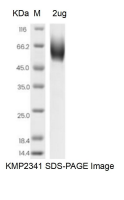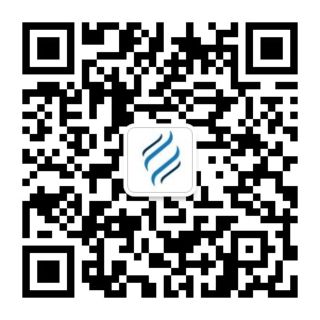Mouse CD223 Protein, His Tag
-
产品编号
KMP2341
-
别名
淋巴细胞活化基因3, Lymphocyte activation gene 3 protein, LAG3
-
规格
- 50ug
- 100ug
- 200ug
| Alias | 淋巴细胞活化基因3, Lymphocyte activation gene 3 protein, LAG3 |
| Catalog Number | KMP2341 |
| Product Description | The Mouse CD223 Protein(KMP2341) is produced in HEK293 Cells and the target gene encoding Ser23-Leu442 is expressed with a 6His tag at the C-terminus. |
| Molecular Name | CD223 |
| Species | Mouse |
| Host | HEK293 Cells |
| Size | 50ug, 100ug, 200ug |
| Purity | >95% as determined by SDS-PAGE |
| Purification | Affinity purification |
| Endotoxin | <1.0 EU/ug determined by the LAL method |
| Formulation | PBS, pH7.4 |
| Background | Lymphocyte-activation gene 3(LAG3), also known as CD223, is a type I transmembrane protein with four extracellular Ig-like domains, designated D1 to D4 and belongs to the immunoglobulin superfamily. The gene for LAG3 lies adjacent to the gene for CD4 on human chromosome 12p13.32 and shares approximately 20% identical to the CD4 gene. LAG3 is expressed on activated T cells, natural killer cells, B cells and plasmacytoid dendritic cells. LAG3 binds with high affinity to MHC class II molecules, and it interferes competitively with the binding of CD4 to MHC class II and thereby blocks the transduction of stimulatory signals mediated by this interaction. LAG3 negatively regulates cellular proliferation, activation, and homeostasis of T cells, and plays an important role in Treg suppressive function. LAG3 is the target of various drug development programs to develop new treatments for cancer and autoimmune disorders. The soluble form, sLAG-3, is being developed as a cancer drug. |
| SDS-PAGE |  |
| Predicted Molecular Weight | 46.16 kDa |
| Storage Condition | Aliquot and store at -20℃ to -80℃. Avoid repeated freezing and thawing cycles. |
| Shipping Condition | In general, the proteins are provided as lyophilized powder which are shipped at ambient temperature. They are shipped out in dry ice if supplied in liquid form. |
| Uniprot ID | Q61790 |
| References | 1.Eur. J. Immunol. 32:2255-2263 (2002) 2.J. Immunol. 169:5392-5395 (2002) 3.Eur. J. Immunol. 33:970-979 (2003) 4.J. Immunol. 174:688-695 (2005) 5.Cell 0:0-0 (2018) 6.J. Immunol. 187:3493-3498 (2011) 7.Science 272:405-408 (1996) |
| Function | Lymphocyte activation gene 3 protein: Inhibitory receptor on antigen activated T-cells. Delivers inhibitory signals upon binding to ligands, such as FGL1. FGL1 constitutes a major ligand of LAG3 and is responsible for LAG3 T-cell inhibitory function. Following TCR engagement, LAG3 associates with CD3-TCR in the immunological synapse and directly inhibits T-cell activation. May inhibit antigen-specific T-cell activation in synergy with PDCD1/PD-1, possibly by acting as a coreceptor for PDCD1/PD-1. Negatively regulates the proliferation, activation, effector function and homeostasis of both CD8+ and CD4+ T-cells. Also mediates immune tolerance: constitutively expressed on a subset of regulatory T-cells (Tregs) and contributes to their suppressive function. Also acts as a negative regulator of plasmacytoid dendritic cell (pDCs) activation. Binds MHC class II (MHC-II); the precise role of MHC-II-binding is however unclear .May function as a ligand for MHC class II (MHC-II) on antigen-presenting cells (APC), promoting APC activation/maturation and driving Th1 immune response. |





 0
0
